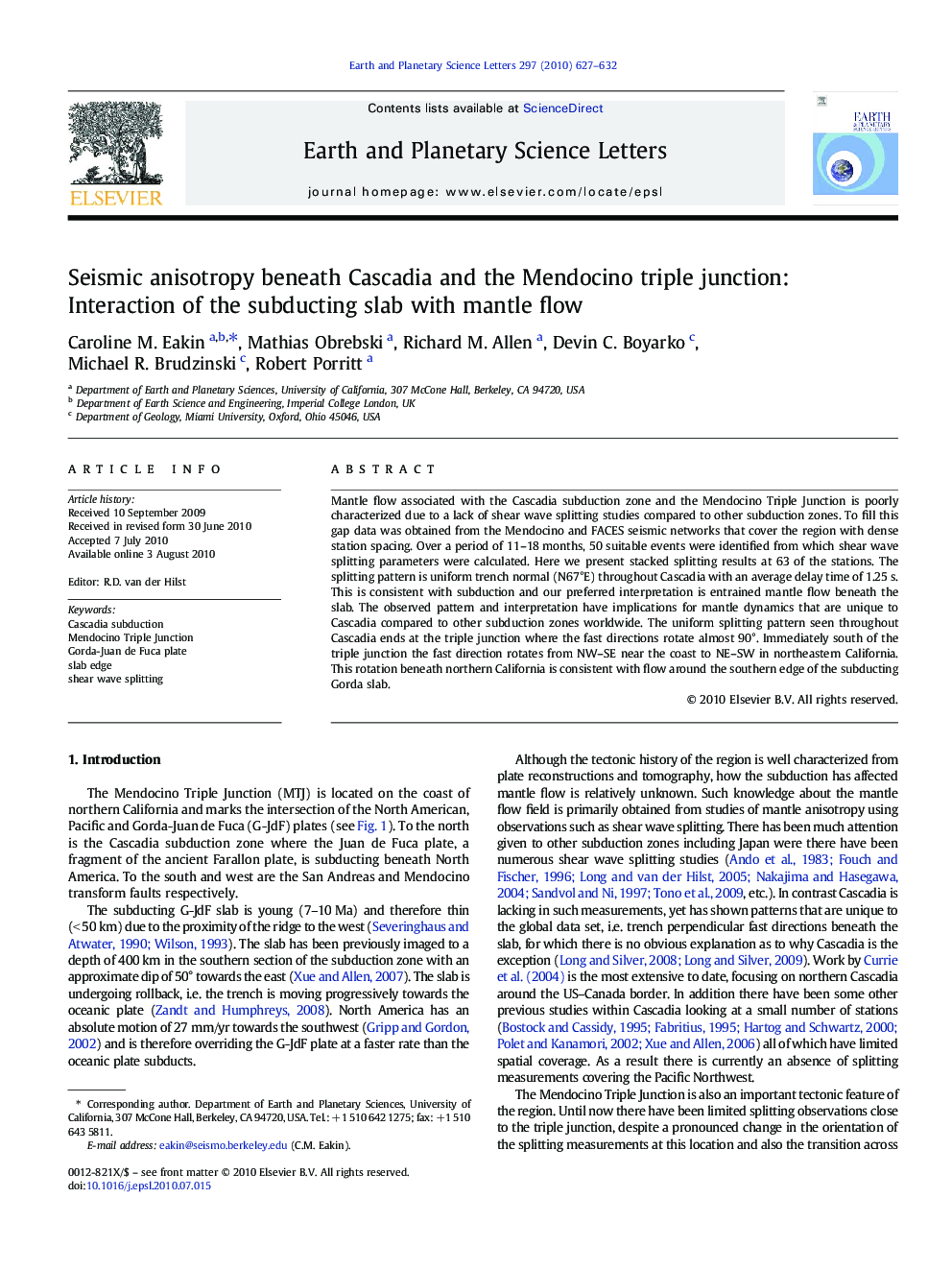| Article ID | Journal | Published Year | Pages | File Type |
|---|---|---|---|---|
| 4678391 | Earth and Planetary Science Letters | 2010 | 6 Pages |
Mantle flow associated with the Cascadia subduction zone and the Mendocino Triple Junction is poorly characterized due to a lack of shear wave splitting studies compared to other subduction zones. To fill this gap data was obtained from the Mendocino and FACES seismic networks that cover the region with dense station spacing. Over a period of 11–18 months, 50 suitable events were identified from which shear wave splitting parameters were calculated. Here we present stacked splitting results at 63 of the stations. The splitting pattern is uniform trench normal (N67°E) throughout Cascadia with an average delay time of 1.25 s. This is consistent with subduction and our preferred interpretation is entrained mantle flow beneath the slab. The observed pattern and interpretation have implications for mantle dynamics that are unique to Cascadia compared to other subduction zones worldwide. The uniform splitting pattern seen throughout Cascadia ends at the triple junction where the fast directions rotate almost 90°. Immediately south of the triple junction the fast direction rotates from NW–SE near the coast to NE–SW in northeastern California. This rotation beneath northern California is consistent with flow around the southern edge of the subducting Gorda slab.
